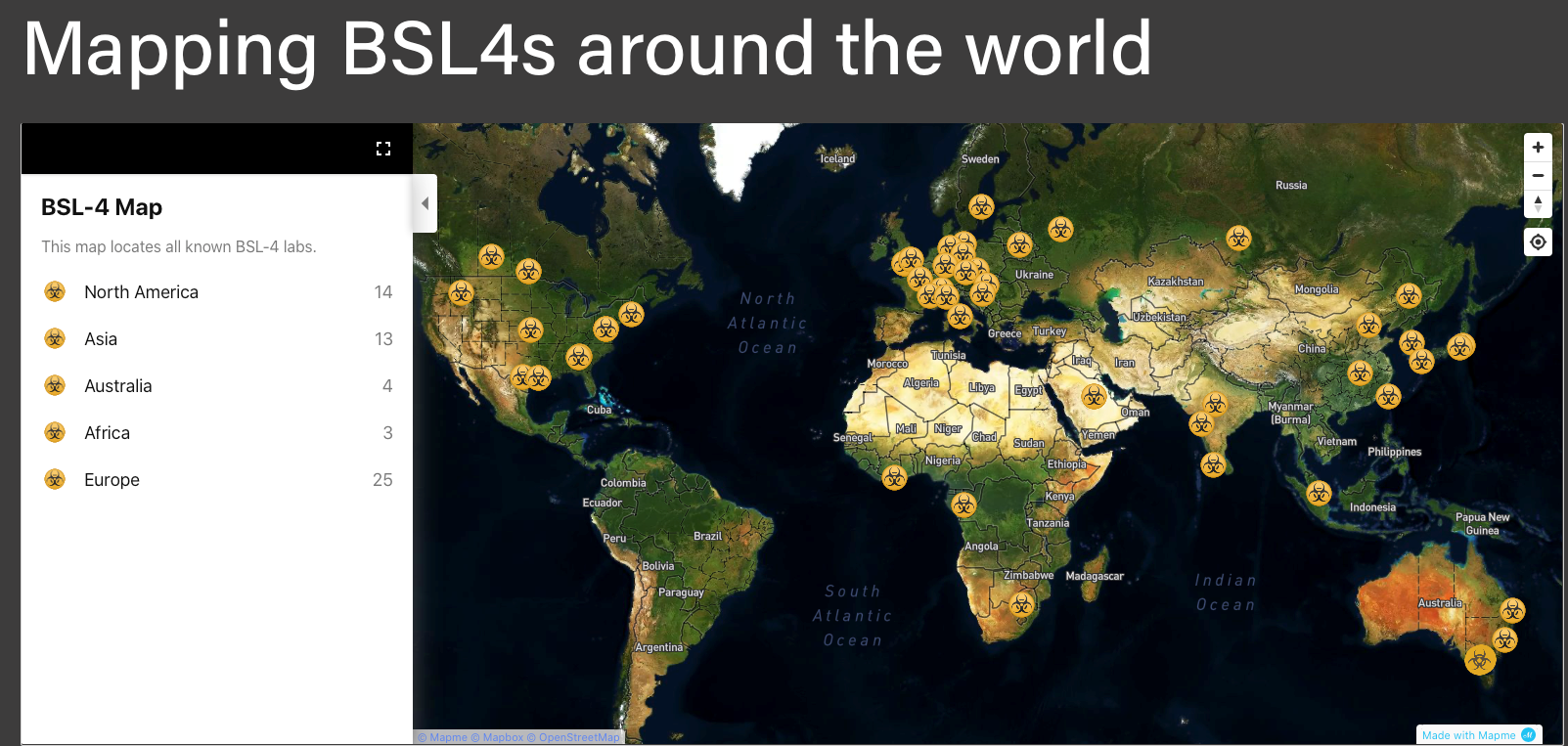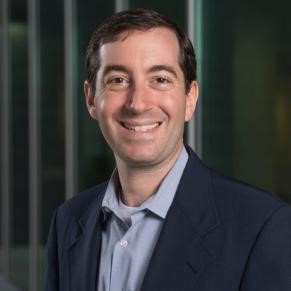In This Story


As the world waits for the results of the investigation into the Wuhan biosafety laboratory and the verification of the COVID-19 origin , experts are turning to other high-security biological research facilities with a renewed interest. The Wuhan lab is only one of many around the world, but where are these other facilities? What are they working on? And most importantly, what security procedures are in place to keep future pandemics from happening?
A new study released last month by Schar School director of biodefense programs Gregory Koblentz and Filippa Lentzos of King’s College London has attracted global media attention—including USA Today, The Guardian, Yahoo! News, and Popular Science, among others—because it answers precisely those questions.
To help the public and policy makers understand where the most important labs are, Koblentz and Lentzos developed an interactive map of all the known Biosafety Level 4 (BSL-4) laboratories. They also received assistance from students Joseph Rodgers, PhD in Biodefense, and Minh Ly, Master’s in Biodefense, at the Schar School.
“This map provides the most comprehensive accounting of where maximum containment laboratories are located around the world,” said Koblentz. “Our research identified nearly 60 BSL-4 labs in operation, under construction, or planned in 23 different countries. The greatest concentration of these labs is in Europe with 25, followed by North America with 14, Asia with 13, Australia with 4, and Africa with 3 labs.
“By collating publicly available information in a systemic way, we've been able to provide insights into the distribution and capabilities of these labs,” he said.
BSL-4 is the maximum level of security for clinical studies of pathogens, equipped with elaborate safety systems to keep the pathogens contained. These systems include special HVAC systems and waste management to ensure that no microbes escape. These maximum-security laboratories are not inescapable, however, and this is, in part, what Koblentz and Lentzos sought to address.
In addition to their interactive map, Koblentz and Lentzos co-authored a policy brief addressing weaknesses and raising the alarm for policymakers.
Of the approximate 60 labs worldwide, at least 20 have been built in the last decade, adding to the chances that something untoward could happen. More than 75 percent of the labs are located in urban centers where a virus could spread with ease.
The focus of these labs, Koblentz suggested, addresses human health more than biodefense. “There is a misperception that BSL-4 labs are mostly top-secret military sites—this is simply not the case,” he said.
“The majority of these labs are run by public health agencies and are engaged in life-saving research to develop diagnostic tests, vaccines, and treatments that can be used to detect and contain outbreaks. At the same time, research conducted by biodefense labs can also have a public health benefit—most of the research on [the virus] Ebola before 2014 was conducted for biodefense purposes but was then used to develop tools to respond to the massive outbreak in West Africa.”
“At the end of the day, the important thing is that there is a large group of viruses which are lethal, transmissible, and for which we have no cures or treatment,” Koblentz said. “These are the types of biological threats that both public health and biodefense agencies want to defend against and need to be studied under maximum containment.”
The labs range in sizes but many are quite small. “Of the 44 labs that we have data on, half are under 200 square meters in size,” Koblentz said. “That is less than half the size of a professional basketball court or about three-quarters of the size of a tennis court.”
But even small labs are complicated: “[A lab that size] may include auxiliary spaces and equipment like chemical showers, animal rooms, and autoclaves in addition to the ‘hot zone’ where work with the live agent is actually conducted,” he said.
Alarmingly, according to the report, not all BSL-4 labs or their local authorities maintain best practices when it comes to biosafety procedures.
“Only one-quarter of countries with BSL-4 labs score well on best practice indicators for biosafety and biosecurity,” the authors write in their policy brief. “Moreover, few have dual-use policies, and none have yet signed up to a new international bio-risk management standard.”
Dual-use research refers to work that can be used for scientific purposes or misused for hostile purposes, Koblentz explained. “One type of dual-use research is called ‘gain of function’ research which involves intentionally modifying a pathogen to give it new characteristics—such as enhanced lethality or transmissibility. This is the public health version of ‘red teaming’—trying to predict what an adversary can do in order to develop better defenses. In this case, the adversary is Mother Nature.”
There are only 3 of 23 countries that have national policies on dual-use biological research and development activities. These activities are significant because of their potential to be reused by other states, or non-state actors, to cause harm.
“Researchers can use this information to identify which viruses pose a higher risk of jumping from animals to humans, becoming transmissible between humans, or improving surveillance systems,” he said. “But in the process, researchers are developing potential pandemic pathogens that could pose biosafety or biosecurity risks.”
That may be the most concerning consequence of a small mistake: another global pandemic.
So what can be done to continue mitigating risk and strengthen global defenses? Koblentz and Lentzos concluded that BSL-4 labs must work to create a culture of responsible research and implement safe laboratory practices. Likewise, there must be greater transparency and risk assessment for dual-use activities. National and international structures to facilitate these changes will also prove useful to establish proper oversight.
“We expect more countries to seek these types of labs in the wake of COVID as part of a renewed emphasis on pandemic preparedness and response,” Koblentz said. “Dual-use research, including gain of function research, is also expected to increase as governments and labs seek to identify future pandemic risks.
“So the gaps we've identified in national and international bio-risk management are quite worrisome. This is part of the reason why we think it’s important to put in place higher national and international standards for biosafety and biosecurity now.”
Read the op-ed by Koblentz, Lentzos, PhD in Biodefense student Joseph Rodgers, and Master’s in Biodefense graduate Minh Ly in the July 2 edition of Bulletin of Atomic Scientists: How to Make Sure the Labs Researching the Most Dangerous Pathogens Are Safe and Secure.
